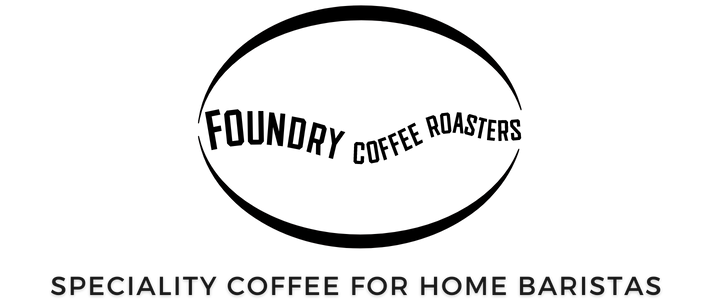-
Buy Coffee
-
Buy Other Stuff
-
Everything Else
ORDERS PLACED NOW WILL BE SHIPPED ON MONDAY 29th DECEMBER - (more info here)
May 10, 2023
If you are buying speciality coffee, you need to know when it was roasted, because roasted coffee is constantly changing.
Coffee can be too fresh and it can be too old. If you don’t know when your coffee was roasted, then you have no way of knowing where it sits on this continuum.
Worse still, you could be paying for coffee that is way past its’ best.
So, for me this is a simple one. If there is no roast date on the bag, don’t buy the coffee.
(In our case, your coffee will usually have been roasted within a couple of days of shipping and never more than a week ago. Each bag tells you exactly when).
Now for the slightly less clear-cut issue of resting times and use by dates.....
There are many different views on this (and very little in the way of solid evidence). All I want to do here is share some of my own thoughts and observations from the last eleven years of running Foundry.
If you brew your coffee within a week of it being roasted (using any method), you may find it hard to get consistently repeatable results. It’s not that the coffee tastes bad but it might be ‘lively’. This instability is related to the de-gassing process which naturally occurs after coffee is roasted. For espresso, you can expect to see significant variation in shot times during this period.
Much of this 'de-gassing' seems to occur within the first 48-72 hours, but most coffee takes at least 7-10 days to fully ‘settle down’ in my experience, sometimes even longer and in extreme cases, up to two weeks - though this is relatively rare.
In terms of flavour, I often find that the finish changes a lot during this initial period, usually getting smoother and longer over those first few days after roasting. This can be a bit challenging from a quality control perspective. Coffee tasted soon after roasting can appear to be ‘roasty’ - and often that same ‘roastiness’ will disappear over the next few days. Not always of course, sometimes the coffee is just roasty after all.
Don’t get me wrong. I’ve brewed coffee mere minutes after it has been roasted and it has tasted amazing! - but I rarely do that these days as its frustrating when you make a brew that you can’t make again. It’s like trying to hit a moving target.
If you’re brewing espresso, the same resting time applies and coffee for espresso for the most part usually tastes at its best between the beginning of week three and the end of week five from roast date. After that, we sometimes (not always) start to see very slight signs of ageing.
At six weeks post-roast, this will usually become an issue to the extent that we would stop using that coffee in our shop. Having said that, we would usually consider most coffee to be perfectly 'drinkable' at home for a few more weeks.
These are broad generalisations. Sometimes, the sweet spot might be a bit different, it depends on the coffee and how you store it (in the bag or a suitable container, in a dark cupboard is best).
It’s also possible to ‘age’ the coffee really quickly but it’s hard to do it in a consistent way. Take some super fresh coffee (maybe within a day or two of roasting) and grind it into your portafilter. Leave it for about half an hour before pulling the shot. This can be a useful trick if you really are desperate and have no alternatives, but it’s hit and miss for sure and I wouldn’t recommend it under normal circumstances.
So, what does all this mean? Well, it means that if you get organised and work out what your coffee needs are likely to be in advance, then it’s fairly easy to make sure that you get to drink your coffee when it is in peak condition.
A quick summary.
1. You need to know when your coffee was/will be roasted.
2. Try to order in advance so that you will start to brew your beans around ten days after the roast date.
3. Try to order the right quantity, so you will have finished the beans by week 6 after the roast date.
For all the reasons above, we have developed our roasting schedule to make sure that you get your coffee before it hits peak condition. We’ve developed a tool to help you figure out how much coffee you need to order, see here for more info.
